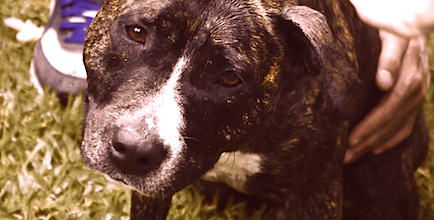20 Common Dog Myths Debunked by a Vet Tech
Discover the truth behind 20 common dog myths with insights from a vet tech. Learn how to better care for your furry friend with accurate information

This article was written by a certified veterinary technician, Kristene Carroll, CVT. It was last reviewed on June 24, 2024
If you have questions or concerns, call your vet, who is best equipped to ensure the health and well-being of your pet. This article is for informational purposes only and is not a substitute for professional medical advice, diagnosis, or treatment. See additional information.

- Unveiling the Truth Behind Common Dog Myths
- Myth 1: Garlic is a Good Remedy for Fleas and Ticks
- Myth 2: Dogs Have Clean Mouths
- Myth 3: Dogs Can Catch a Cold
- Myth 4: Rescue Dogs Are Bad Because You Don’t Know Where They Came From
- Myth 5: Dogs Have Sweat Glands
- Myth 6: My Fenced Yard Means I Don’t Need to Worry About Worms
- Myth 7: I Can Give Ibuprofen to My Dog
- Myth 8: My Dog Is Hypoallergenic
- Myth 9: Dogs Are Colorblind
- Myth 10: A Dry Nose Means a Sick Dog
- Myth 11: Dogs Heal Themselves by Licking Their Wounds
- Myth 12: Brushing My Dog’s Teeth Is Silly
- Myth 13: A Human Year Is Equal to 7 in Dog Years
- Myth 14: You Can’t Teach an Old Dog New Tricks
- Myth 15: A Dog Will Cry Out if They’re Feeling Pain
- Myth 16: There’s a Reason Dogs Eat Grass
- Myth 17: I Don’t Need to Vaccinate My Dog
- Myth 18: My Dog’s Thick Fur Coat Means They Stay Warm in Winter
- Myth 19: Some Dog Breeds Are More Aggressive Than Others
- Myth 20: I Don’t Need to Spay or Neuter My Dog

Don’t leave your pet’s safety to chance
Sign up for Petful recall alerts today.

Unveiling the Truth Behind Common Dog Myths
How many dog myths have you heard over your lifetime?
Whether it’s fodder from the neighbors or beliefs that passed down through the generations, some dog myths are just that — myths, not truths.
Here we take a closer look at 20 of the worst dog myths and discuss why they are incorrect.
Myth 1: Garlic is a Good Remedy for Fleas and Ticks

Unfortunately, this myth is propagated a lot, especially on the internet. Not only will garlic do nothing to help with fleas and ticks in your dog, but garlic has also been known to cause hemolytic anemia in dogs, a condition where the body attacks and destroys its red blood cells.
Key Points:
- Ineffective: Garlic does not help with fleas or ticks.
- Harmful Effects: Garlic can cause hemolytic anemia, leading to the destruction of red blood cells.
- Expensive Treatment: Treating hemolytic anemia requires multiple days of hospitalization and often blood transfusions.
- Risk Factor: Not all dogs who eat garlic will develop this condition, but feeding your pet garlic increases the risk.
Feeding your pet garlic poses a significant health risk without any benefits for flea or tick control. It’s crucial to rely on proven treatments and consult with your vet for safe and effective options.
Myth 2: Dogs Have Clean Mouths

I’ve heard this since I was a kid. It never quite made sense, and yet I always believed it until I went to school to become a certified veterinary technician.
Key Points:
- Bacteria Presence: Dogs’ mouths are filled with bacteria and are far from clean.
- Eating Habits: Dogs often eat their own poop, contributing to the bacterial load in their mouths.
- Scientific Insight: Research shows that those mouths are very dirty.
Considering these points, it’s clear that the notion of dogs having clean mouths is a myth. Proper dental care and hygiene are essential for maintaining your dog’s oral health.
Myth 3: Dogs Can Catch a Cold

The common cold does not affect dogs. However, dogs are susceptible to other illnesses.
Key Points:
- Virus Susceptibility: Dogs can contract viruses such as leptospirosis and parvo.
- Bacterial Infections: Dogs can also develop bacterial infections like pneumonia.
- Common Cold: The viruses that cause the common cold in humans do not affect dogs.
Understanding the differences in diseases that affect dogs versus humans can help ensure your pet receives appropriate care and treatment.
Myth 4: Rescue Dogs Are Bad Because You Don’t Know Where They Came From

While you may not know the full history of a rescue dog, it doesn’t mean they are bad.
Key Points:
- Varied Histories: Many dogs raised from puppies can still develop behavioral issues, while many rescue dogs are friendly and well-adjusted.
- Behavioral Testing: Reputable rescues often conduct tests to assess how dogs respond to people, food, other dogs, and kids.
- Opportunity for a Second Chance: Giving a rescue dog a chance can be highly rewarding. Learn more about the benefits of adopting a shelter dog.
Raising a dog from a puppy does not guarantee a problem-free pet. Rescue dogs, with the right support and care, can be just as loving and well-behaved as any other dog.
Myth 5: Dogs Have Sweat Glands

This one is not exactly a myth—most of a dog’s sweat glands are located around their paw pads.
Key Points:
- Sweat Glands: Dogs have sweat glands primarily around their paw pads.
- Cooling Mechanism: The main way dogs cool off is by panting. The exchange of air allows the moist lining of their lungs to help cool them.
- Breeds at Risk: Dogs who have poor air exchange, such as those with brachycephalic syndrome, have more difficulty cooling off and are more susceptible to heatstroke. This includes breeds like Pugs and Bulldogs.
Understanding how dogs cool off can help you ensure your pet stays comfortable and safe in hot weather.
Myth 6: My Fenced Yard Means I Don’t Need to Worry About Worms

To my surprise, I’ve heard many people say this. Sure, the fenced-in yard may be great at keeping your dog in, but it is not a magical barrier that can keep intestinal parasites and heartworms out.
Key Points:
- Intestinal Parasites: These are carried in the feces and urine of other animals like rabbits, squirrels, and even birds. These can be deposited in your yard and, in some cases, like whipworm, can live in the soil for up to 7 years.
- Heartworm Transmission: Heartworm is carried by mosquitoes, which all the fences, citronella candles, and bug spray in the world still can’t keep away.
- Preventive Measures: Monthly preventive treatments are crucial to protect your dog from these parasites.
Keeping your dog safe from parasites requires more than just a fenced yard. Ensure you give that monthly preventive—you’ll be glad you did.
Myth 7: I Can Give Ibuprofen to My Dog

Nope—ibuprofen is toxic to dogs and can cause liver and kidney dysfunction.
Key Points:
- Toxicity: Ibuprofen is harmful to dogs and can lead to serious health issues.
- Alternative Medications: Some veterinarians may prescribe aspirin or Tylenol for dogs, but the dosage is very specific, and it’s easy to overdose your dog on these medications.
- Consult a Veterinarian: Never give any human medicine to your dog without consulting a veterinarian.
Always seek professional advice before administering any medication to your dog to ensure their safety and well-being.
Myth 8: My Dog Is Hypoallergenic

Sorry—there is no dog that is truly hypoallergenic.
Key Points:
- Allergic Response: Some dogs may create a greater allergic response than others, but no dog is completely hypoallergenic.
- Managing Allergies: People with allergies can often manage symptoms by choosing breeds known to produce fewer allergens and by maintaining a clean environment.
Understanding that no dog is entirely hypoallergenic can help set realistic expectations and encourage proper management of allergy symptoms.
Myth 9: Dogs Are Colorblind

Dogs (and cats) actually can see color, but they don’t see as many colors as humans do.
Key Points:
- Color Vision: Dogs can see color, though their color spectrum is more limited compared to humans.
- Night Vision: Their unique eyesight allows them to see better in the dark.
Understanding the true nature of dogs’ vision helps in appreciating how they perceive the world around them.
Myth 10: A Dry Nose Means a Sick Dog

This is a common misconception. If your dog has a dry nose, it generally has no relation to their overall health.
Key Points:
- Misconception: A dry nose does not necessarily indicate illness in dogs.
- Normal Variation: A dog’s nose can be dry for various harmless reasons.
For more information on why your dog might have a dry nose, consult your veterinarian to ensure your pet’s well-being.
Myth 11: Dogs Heal Themselves by Licking Their Wounds

Remember how we talked about dogs’ dirty mouths? Well, think about all of the bacteria that exist in that mouth getting transferred to the wound.
Key Points:
- Bacteria Transfer: Dogs’ mouths contain a lot of bacteria, which can be transferred to wounds when they lick them.
- Risk of Infection: Licking wounds can cause infection and delay healing.
- Proper Wound Care: It’s best not to let dogs lick their wounds and to follow proper wound care procedures.
For more information on healing wounds, consult your veterinarian to ensure your dog’s wounds heal properly and without complications.
Myth 12: Brushing My Dog’s Teeth Is Silly

It may feel silly while you’re doing it, but dental disease is proven to cause systemic health issues in dogs and can often be painful when dogs have really bad teeth. Brushing a dog’s teeth helps minimize the progression of dental disease.
Key Points:
- Prevent Dental Disease: Regularly brushing a dog’s teeth helps prevent dental disease, which can lead to other health issues.
- Early Problem Detection: Regular brushing means you’re constantly looking in your dog’s mouth, helping you identify problems like oral tumors and abscesses that may have otherwise gone unnoticed.
Maintaining good dental hygiene is crucial for your dog’s overall health and can prevent many painful and costly issues.
Myth 13: A Human Year Is Equal to 7 in Dog Years

Not quite—different breeds and sizes of dogs have varying life spans. Larger-breed dogs tend to have shorter life spans, while smaller-breed dogs tend to have longer life spans.
Key Points:
- Breed and Size Variation: The age conversion between humans and dogs varies significantly based on the dog’s breed and size.
- Life Span Differences: Larger breeds generally live shorter lives compared to smaller breeds.
For more detailed information, check out our related article on “How to Calculate Dog Years and Cat Years.”
Understanding these differences can help you better care for your dog as they age.
Myth 14: You Can’t Teach an Old Dog New Tricks

Quite the contrary—training is just as good for your older dog as it is for a younger dog. Training provides mental stimulation and attention that older dogs crave.
Key Points:
- Mental Stimulation: Training offers valuable mental stimulation, which is essential for keeping older dogs engaged and happy.
- Learning and Reward: Older dogs may not “sit” or “give paw” as quickly, but they still love to learn and be rewarded just as much as puppies do.
- Bonding Time: Training sessions also provide a wonderful opportunity for extra bonding time with your older dog.
Embrace training for your senior dog to keep their mind active and strengthen your bond.
Myth 15: A Dog Will Cry Out if They’re Feeling Pain

We often see people bring their dog to the vet’s office for limping, and one of the first things they always say is, “She doesn’t seem to be in pain.” The question then is, “Well, why do you think she’s limping?”
Key Points:
- Signs of Pain: Limping is a sign of pain. Many species, including dogs, often try to hide their pain as an instinct to protect themselves from predators.
- Behavioral Changes: It’s important to watch for changes in behavior to see if your dog is in pain.
Understanding that dogs may not always cry out when in pain can help ensure timely and appropriate care for your pet. Watch for subtle signs and consult your vet if you notice any changes in your dog’s behavior.
Myth 16: There’s a Reason Dogs Eat Grass

No one really knows for sure why dogs eat grass.
Key Points:
- Unknown Reasons: There are no definitive studies or science available to explain why dogs eat grass.
- Some Theories:
- Dogs eat grass to make themselves throw up if they feel sick.
- Some dogs just like the taste of grass.
- Grass makes dogs’ stomach feel better.
For more insights into the theories about why dogs eat grass, consult with your veterinarian or pet health expert. Understanding these behaviors can help you better care for your dog.
Myth 17: I Don’t Need to Vaccinate My Dog

While there’s a lot of controversy surrounding vaccines lately, the rabies virus is a human health issue too. Most states require by law that your dog be vaccinated for rabies.
Key Points:
- Legal Requirements: Most states mandate rabies vaccinations for dogs to protect public health.
- Access to Services: To bring your dog to puppy class or a boarding facility, your dog will need to have certain vaccines.
- Consult Your Vet: If you have questions or concerns about vaccinating your dog, consult with your vet to determine the best course of action for your pet and your lifestyle.
Vaccinations are crucial for your dog’s health and safety, as well as for the well-being of the community.
Myth 18: My Dog’s Thick Fur Coat Means They Stay Warm in Winter

While a Siberian Husky will be less susceptible to the cold than, say, a Chihuahua, a thick fur coat is not a guarantee.
Key Points:
- Frostbite Risk: In extended cold temperatures, dogs are most likely to develop frostbite on their paws, scrotum (in males), and the tips of their ears. Even thick-coated dogs don’t have a lot of protection in these areas.
- Cold Weather Precautions: Ensure your dog isn’t exposed to extreme temperatures for too long.
Winter can be great fun for dogs—just take the necessary precautions to keep them safe and comfortable.
Myth 19: Some Dog Breeds Are More Aggressive Than Others

While certain dog breeds may have some common characteristics, it’s really what you do with those characteristics that matters.
Key Points:
- Training Over Breed: If a dog is aggressive, it’s more likely due to their training or lack thereof than the actual breed.
- Anxiety and Aggression: An anxious dog may display signs of aggression out of fear.
- Professional Help: Consult with either a trainer or a veterinary behaviorist to address aggression issues.
It’s important to know your dog and how to handle them properly. Learn more about certain dog breeds and their characteristics to better understand and manage your pet’s behavior.
Myth 20: I Don’t Need to Spay or Neuter My Dog

Studies have shown that intact male and female dogs can have health issues as they age. Although there has been some debate over exactly when to spay or neuter your dog, the veterinary community is in agreement: You should get it done for your pet.
Key Points:
- Health Benefits: Spaying or neutering can prevent various health issues in dogs as they age.
- Pet Overpopulation: Pet overpopulation is a significant problem, with many dogs in shelters getting euthanized every day.
- Consult Your Vet: If you have reservations about spaying or neutering your dog, please consult your vet to determine the best course of action.
Spaying or neutering your dog is a responsible decision that benefits both your pet’s health and the broader community.







